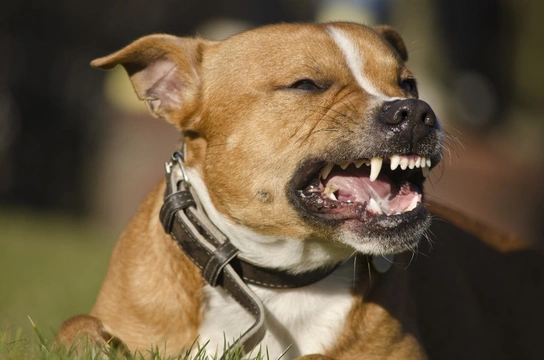Pets
Pets for studWanted petsBreedersAccessories & services
Knowledge hub
Support
Support & safety portal
Tougher sentencing plans for owners of deliberately aggressive dogs
The control and safety of all of the UK’s dogs are overseen by the Dangerous Dogs Act (DDA), which has been in place in the UK for 25 years this year. The DDA mandates that certain breeds and types of dogs are illegal and cannot be owned in the UK, and also polices the appropriate control of all dogs, whether they be in a public or private place, in order to protect both people and other animals.
As the law currently stands, most of the remit of the Dangerous Dogs Act is designed to keep dangerous dogs off the streets, and ensure that everyone keeps their dogs under control. Most dog owners are aware that if their dog is found to be from a banned breed or is a danger to others-particularly if they hurt someone-that their dog may be removed and destroyed, but few dog owners would be able to quote the letter of the law itself when it comes to what actually happens to the people who own such dogs if they are found guilty in a case where a dangerous dog has attacked or harmed someone.
Additionally, recent proposals by Environment Secretary Owen Paterson may mean changes to the current sentencing portion of the Act as it stands, which will mean the potential for tougher sentences for people whose dogs attack another person, particularly if the dog was either deliberately trained to be aggressive or was used as a weapon.
In this article, we will take a quick look at the current sentencing regulations in place for people as part of the Dangerous Dogs Act, and what the proposed changes would bring if passed into law. Read on to learn more.
The current sentencing guidelines
The last time that the sentencing part of the Dangerous Dogs Act was reviewed and amended was in 2012, and it is the 2012 guidelines that are currently in place in UK law. These guidelines apply to people convicted of any of the following offences:
- Being in charge of a dog that is dangerously out of control and that injures another person.
- Being in charge of a dog that is dangerously out of control to the point that it produces a reasonable fear of injury in another person.
- Owning or possessing a dog that is prohibited to own in the UK, including the breeding, importing, selling, exchanging or advertising of dogs of banned breeds.
In cases where a dog is found to have injured a person and the owner of the dog is held culpable, there are a range of “levels” that can be used as guidance on sentencing for the convicting judge, ranging from Categories three through one.
Category three covers community orders and fines, whilst categories two and one cover the possibility for a custodial sentence, with the current guidance indicating that being found guilty of the highest level of harm and culpability combined may bring with it a two year custodial sentence.
As well as custodial sentencing, compensation may be mandated by the court as well, as may a future ban on keeping dogs and potentially, a destruction order being placed on the dog involved.
This all means that currently, a person who owns a dog that harms of even kills a person and is found to have been directly and criminally responsible for their death may only face a sentence of around two years.
Proposed changes
In the wake of several high-profile dog attacks over the course of the last couple of years, including the very recent death of Mr. David Ellam, who died of injuries sustained while trying to protect his own dog, Environment Secretary Owen Paterson has announced a range of proposed changes to the sentencing guidance in place for convicted owners of dangerous dogs.
The proposals would, if introduced, bring the penalties for the owners of dangerous dogs more in line with the penalties associated with causing death by dangerous driving, which comes with a maximum custodial sentence of 14 years. Additionally, the penalty for causing actual bodily harm by means of a dog attack could be raised to five years imprisonment.
Finally, if a service dog is attacked by another dog and is killed or injured, the custodial sentence for this alone could rise to three years imprisonment.
Interestingly, if passed into law when the proposals go through the House of Lords, these increased sentences would fall under the Antisocial Behaviour, Crime and Policing Bill, rather than that of the Dangerous Dogs Act itself.
The harsher sentencing guidance is intended to provide the appropriate level of punishment for dog owners that have deliberately trained their dogs to be aggressive, or that are otherwise deemed culpable for an attack, much as is the case with the current dangerous driving laws.
Whether or not these proposals will be passed into law is not yet clear, however, public support for the changes is currently high, and after an online consultation, 91% of the 3,180 responders were found to have stated that they were in favour of tougher sentencing guidelines for the owners of dangerous and aggressive dogs.



